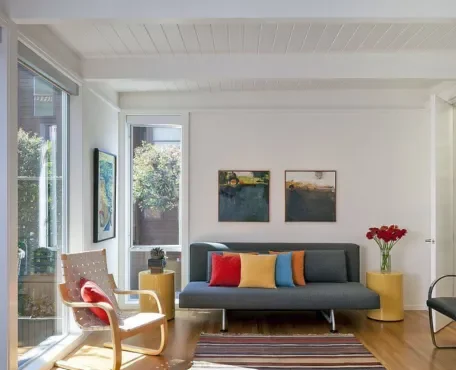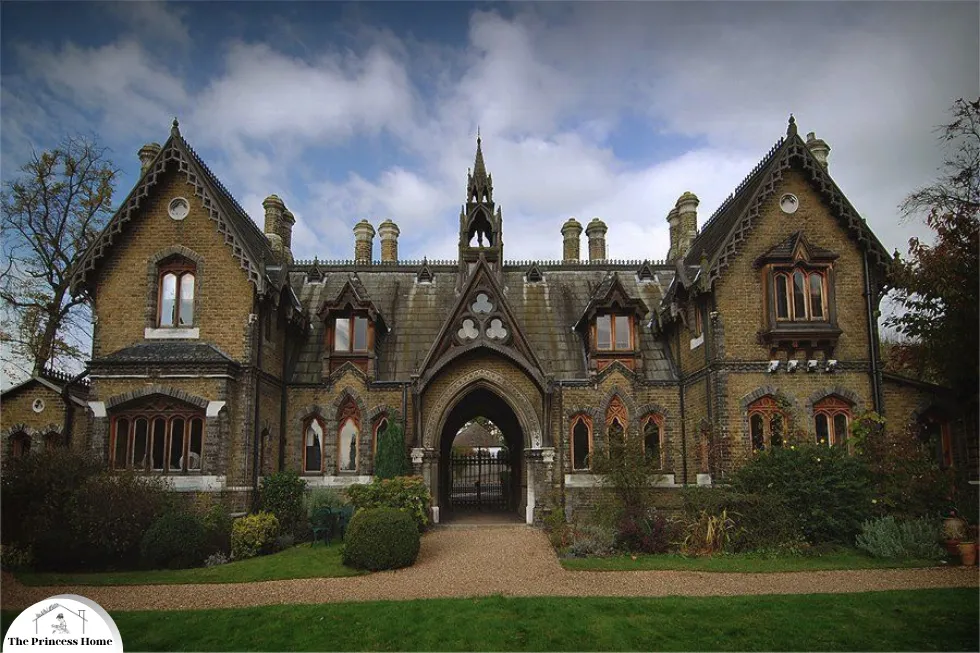
Victorian architecture stands as a testament to an era of profound transformation, innovation, and cultural richness. Flourishing during the reign of Queen Victoria of the United Kingdom from 1837 to 1901, this architectural movement left an indelible mark on cities and towns across the globe. From the towering spires of Gothic Revival churches to the picturesque charm of Italianate villas, Victorian architecture encompasses a diverse array of styles that reflect the eclectic tastes and influences of the period.

Legacy and Influence:
Victorian architecture left an enduring legacy that continues to shape the built environment to this day. Many cities boast neighborhoods adorned with Victorian-era homes, characterized by their ornate facades and distinctive features. Historic preservation efforts have sought to safeguard these architectural treasures, recognizing their cultural significance and aesthetic value. Moreover, Victorian architectural styles have inspired subsequent movements, influencing designers and architects around the world.
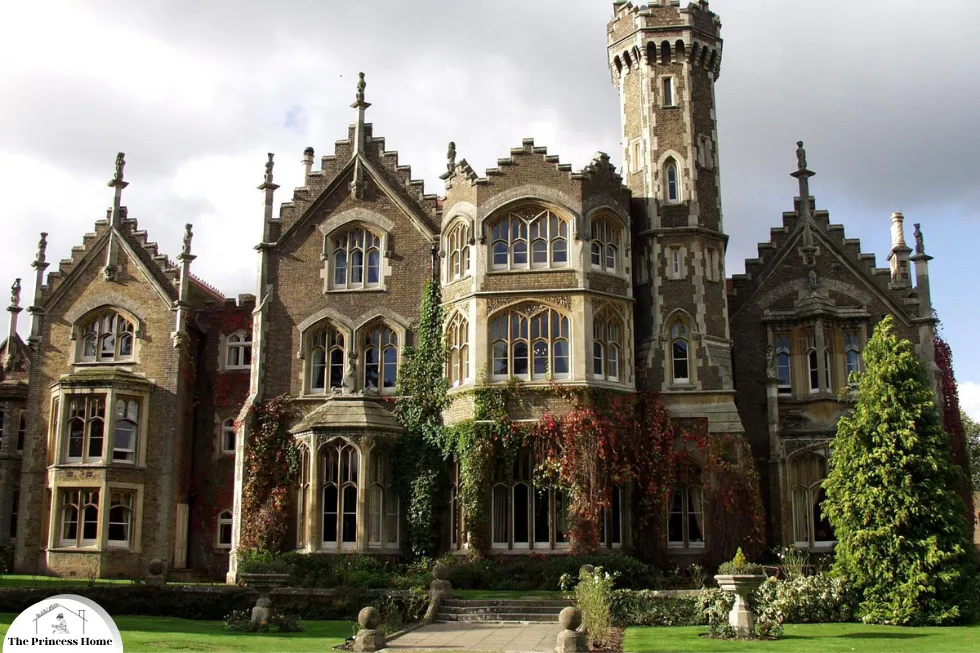
Victorian architecture refers to the architectural styles that emerged during the reign of Queen Victoria of the United Kingdom, which lasted from 1837 to 1901. This period witnessed a flourishing of architectural innovation and experimentation, with a wide range of styles influenced by historical revivals, technological advancements, and cultural trends. Victorian architecture is characterized by its ornate details, eclectic mix of influences, and grandiose designs.

The Rise of Victorian Architecture:
Victorian architecture emerged during a period of rapid industrialization and urbanization in the 19th century. As cities expanded and wealth accumulated, there was a growing demand for grandiose residences, public buildings, and civic structures that reflected the aspirations of the burgeoning middle and upper classes. Architects seized this opportunity to experiment with new materials, technologies, and design philosophies, leading to a remarkable period of architectural innovation.
Key Architectural Styles:
1. Gothic Revival: Inspired by the medieval cathedrals of Europe, Gothic Revival architecture captured the imagination of Victorian architects with its soaring arches, intricate tracery, and pointed spires.
2. Italianate: Drawing inspiration from the villas of Renaissance Italy, Italianate architecture became synonymous with elegance and refinement.
3. Queen Anne: The Queen Anne style embraced asymmetry, whimsy, and eclecticism. Buildings adorned with turrets, gables, and elaborate ornamentation epitomized the romanticism of the era.
4. Second Empire: Originating in France during the reign of Napoleon III, Second Empire architecture was characterized by its mansard roofs, dormer windows, and opulent embellishments.
5. Romanesque Revival: Inspired by the rugged simplicity of Romanesque architecture, this style featured massive stone walls, rounded arches, and robust detailing.
6. Tudor Revival: Evoking the charm of Tudor England, Tudor Revival architecture incorporated elements such as half-timbering, steeply pitched roofs, and leaded glass windows.
Here are some key features and styles associated with Victorian architecture:
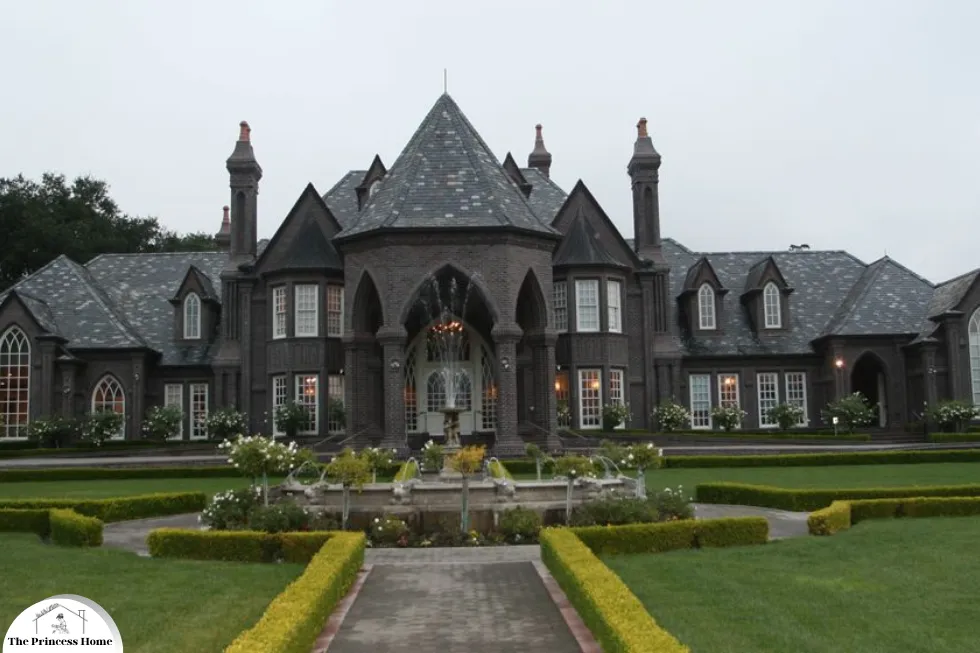
1*.Gothic Revival:
Inspired by medieval Gothic architecture, this style was popularized by architects like Augustus Pugin and Sir George Gilbert Scott. Gothic Revival buildings are known for their pointed arches, steeply pitched roofs, elaborate tracery, and decorative embellishments such as gargoyles and finials.
Gothic Revival architecture emerged in the late 18th century and flourished throughout the 19th century. It was deeply inspired by the medieval Gothic style, aiming to revive and adapt its elements for contemporary buildings. This movement was particularly prominent in Britain, where architects like Augustus Pugin and Sir George Gilbert Scott played significant roles in popularizing it.
Key features of Gothic Revival buildings include:
1.Pointed Arches:
Unlike the rounded arches commonly found in earlier architectural styles, Gothic Revival architecture features pointed arches, which lend a sense of verticality and elegance to structures.
2.Steeply Pitched Roofs:
Buildings in this style often have roofs with steep pitches, sometimes adorned with decorative elements like pinnacles or crosses at their peaks.
3.Elaborate Tracery:
Tracery refers to the intricate stone or wooden work used to fill the openings in windows, creating visually stunning patterns. In Gothic Revival buildings, tracery is often elaborate and finely detailed, showcasing craftsmanship and artistry.
4.Decorative Embellishments:
Gargoyles, finials, and other decorative elements are commonly found in Gothic Revival architecture. Gargoyles serve both functional and ornamental purposes, often acting as water spouts to drain rainwater away from the building’s walls.
5.Vertical Emphasis:
Gothic Revival architecture emphasizes vertical lines, aiming to draw the viewer’s gaze upward towards the heavens. This verticality is achieved through features like tall spires, slender columns, and pointed arches.
6.Ribbed Vaults:
In interiors, Gothic Revival buildings often feature ribbed vaults, which are structural elements that support the ceiling and create a sense of height and space.
7.Polychromy:
Some Gothic Revival buildings incorporate polychromatic elements, where different colored stones or bricks are used to create contrast and visual interest.
Overall, Gothic Revival architecture sought to evoke the grandeur, spirituality, and romanticism of the medieval era while adapting these elements to suit the needs and tastes of the 19th century. It remains a significant and influential architectural style, with examples found in countries around the world.

2*.Italianate:
Drawing inspiration from Italian Renaissance architecture, Italianate buildings are characterized by their symmetrical facades, tall windows with elaborate surrounds, low-pitched roofs, and often feature decorative brackets and balconies.
Italianate architecture emerged in the 19th century, drawing inspiration from the grandeur and elegance of Italian Renaissance architecture. This style became popular in Europe and the United States, particularly during the Victorian era.
Italianate buildings are distinguished by several key features:
1.Symmetrical Facades:
Italianate buildings typically feature symmetrical facades, with balanced proportions and an overall sense of harmony. This symmetry contributes to the architectural balance and visual appeal of the structures.
2.Tall Windows with Elaborate Surrounds:
Italianate buildings often showcase tall windows with elaborate surrounds, including decorative moldings, pediments, or pilasters. These features add ornamental detail to the facade while allowing ample natural light into the interior spaces.
3.Low-Pitched Roofs:
Unlike the steeply pitched roofs commonly found in Gothic or Victorian styles, Italianate buildings typically have low-pitched roofs. These roofs may be hipped or flat, contributing to the horizontal emphasis of the architectural style.
4.Decorative Brackets:
Italianate buildings frequently incorporate decorative brackets or corbels beneath the eaves of the roofline. These brackets serve both aesthetic and structural purposes, adding visual interest to the facade while supporting overhanging eaves.
5.Balconies:
Many Italianate buildings feature balconies, either at the front of the structure or overlooking a courtyard or garden. These balconies often have ornate railings or balustrades, enhancing the architectural elegance of the building.
6.Stucco or Stone Exteriors:
Italianate buildings may be constructed using stucco, stone, or brick materials, reflecting the rich textures and earthy tones associated with Italian Renaissance architecture.
7.Rounded Archways:
Some Italianate buildings incorporate rounded archways, reminiscent of classical Roman architecture. These arches add a sense of grandeur and sophistication to entrances or windows.
Overall, Italianate architecture embodies a sense of grace, refinement, and classical beauty, paying homage to the architectural traditions of Italy’s Renaissance period while adapting them to suit the tastes and preferences of the 19th century.

3*.Queen Anne:
Named after the reign of Queen Anne (1702-1714) but popularized during the Victorian era, Queen Anne architecture is known for its asymmetrical facades, steeply pitched roofs, varied textures and materials, decorative spindle work, and bay windows. Queen Anne architecture, named after the reign of Queen Anne (1702-1714), became popular during the Victorian era, particularly in the late 19th century.
This architectural style is characterized by several distinctive features:
1.Asymmetrical Facades:
Queen Anne buildings often feature asymmetrical facades, with irregular shapes and varying projections. This asymmetry adds visual interest and complexity to the exterior design.
2.Steeply Pitched Roofs:
Queen Anne structures typically have steeply pitched roofs, sometimes with multiple gables and dormers. These roofs contribute to the verticality and dynamic silhouette of the buildings.
3.Varied Textures &Materials:
Queen Anne architecture incorporates a diverse range of textures and materials, including brick, stone, wood shingles, and decorative tiles. This eclectic mix of materials enhances the richness and character of the facade.
4.Decorative Spindle work:
One of the hallmarks of Queen Anne style is the use of decorative spindle work, often seen in the form of elaborate balustrades, porch railings, and gable decorations. These intricate details add ornamental flair to the exterior.
5.Bay Windows:
Queen Anne buildings frequently feature bay windows, which protrude outward from the facade and provide additional interior space and natural light. These windows are often adorned with decorative trim and leaded glass.
6.Towers and Turrets:
Many Queen Anne structures incorporate towers, turrets, or conical roofs, which serve both decorative and functional purposes. These architectural elements contribute to the whimsical and fairy-tale-like quality of the style.
7.Patterned Masonry:
Some Queen Anne buildings feature elaborate patterns or designs created with masonry, such as decorative brickwork or intricate tile motifs. These patterns add visual interest and complexity to the facade.
Queen Anne architecture embodies a sense of exuberance, eclecticism, and individuality, reflecting the eclectic tastes of the Victorian era. Despite its name, this style emerged long after the reign of Queen Anne, but it remains an enduring and beloved architectural style, admired for its ornate detailing and playful charm.
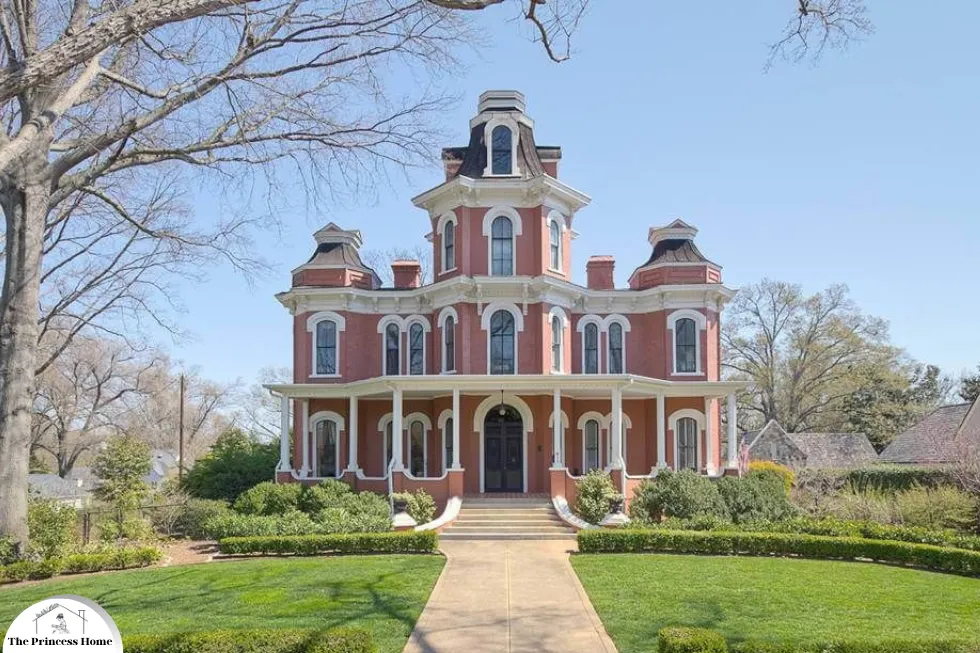
4*.Second Empire:
This style originated in France during the reign of Napoleon III and was later adopted in Britain and the United States. Second Empire buildings are distinguished by their mansard roofs, dormer windows, elaborate cornices, and often feature ornate ironwork and balconies. Second Empire architecture originated in France during the reign of Napoleon III in the mid-19th century and later gained popularity in Britain and the United States.
This architectural style is characterized by several distinctive features:
1.Mansard Roofs:
One of the most recognizable features of Second Empire buildings is the mansard roof. These roofs have a double slope, with the lower slope being steeper than the upper slope. Mansard roofs provide additional living space within the attic and create a distinctive silhouette.
2.Dormer Windows:
Second Empire structures often feature dormer windows protruding from the mansard roof. These windows allow light into the attic space and add visual interest to the roofline.
3.Elaborate Cornices:
Second Empire buildings typically have elaborate cornices at the top of the facade, emphasizing the transition between the roof and the walls. These cornices are often adorned with decorative moldings, brackets, or dentils.
4.Ornate Ironwork:
Many Second Empire buildings incorporate ornate ironwork, especially in balconies, railings, and decorative details. Intricate wrought iron designs add elegance and refinement to the exterior of the buildings.
5.Balconies:
Second Empire architecture often includes balconies, typically adorned with ornamental railings and supported by decorative brackets. These balconies provide outdoor space and contribute to the overall aesthetic appeal of the building.
6.Symmetrical Facades:
While not strictly adhering to symmetry, Second Empire buildings often exhibit a balanced composition, with elements like windows and doors arranged in a harmonious manner.
7.Richly Decorated Interiors:
Inside Second Empire buildings, you may find richly decorated interiors with features such as high ceilings, elaborate moldings, and grand staircases. These interiors reflect the opulence and sophistication of the era.
Second Empire architecture reflects the grandeur and prosperity of the mid-19th century, characterized by its distinctive roofline, ornate detailing, and elegant proportions. Despite originating in France, this style found popularity across Europe and North America, leaving behind a legacy of impressive buildings and landmarks.
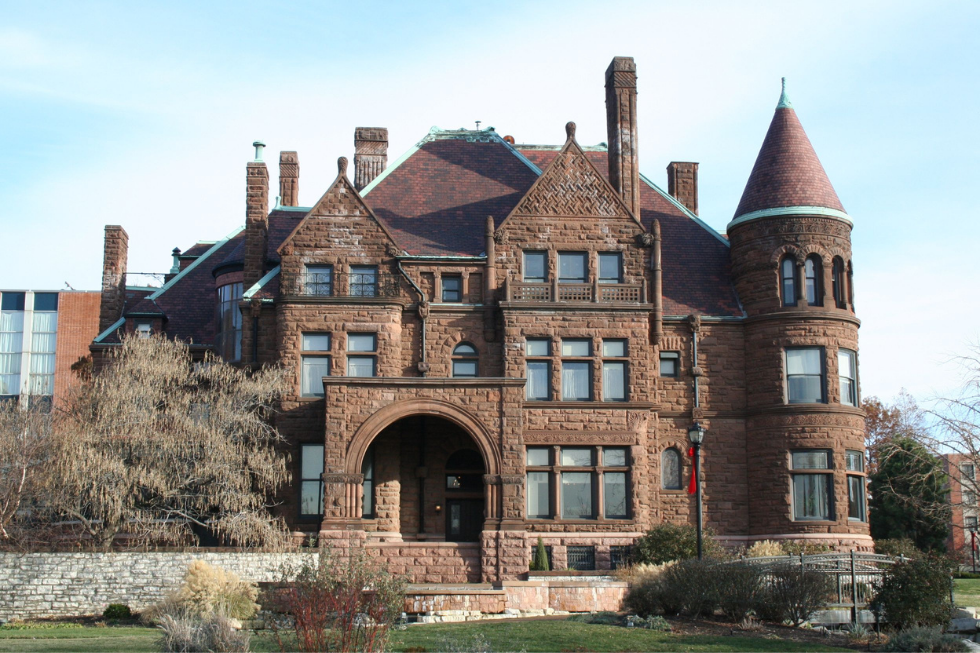
5*.Romanesque Revival:
Inspired by Romanesque architecture of the Roman Empire, this style features round arches, thick masonry walls, and robust, fortress-like appearance. It often incorporates decorative elements such as colonnades, towers, and intricate carvings. Romanesque Revival architecture, inspired by the Romanesque architectural style of the Roman Empire, emerged in the 19th century and gained popularity as a revivalist movement.
This architectural style is characterized by several distinctive features:
1.Round Arches:
Romanesque Revival buildings feature round arches, reminiscent of the Romanesque architecture of the medieval period. These arches are often prominently displayed in doorways, windows, and arcades, lending a sense of solidity and strength to the structure.
2.Thick Masonry Walls:
Reflecting the fortress-like appearance of medieval Romanesque buildings, Romanesque Revival structures typically have thick masonry walls. These walls convey a sense of durability and permanence, echoing the defensive character of their medieval predecessors.
3.Robust Appearance:
Romanesque Revival architecture often exudes a robust and imposing aesthetic, with sturdy proportions and a sense of solidity. This robust appearance contributes to the architectural character of the buildings, evoking the strength and endurance of medieval fortifications.
4.Decorative Elements:
While emphasizing solidity and strength, Romanesque Revival buildings also incorporate decorative elements inspired by medieval Romanesque architecture. These may include colonnades, towers, and intricate carvings featuring motifs such as geometric patterns, foliage, and mythical creatures.
5.Towers:
Many Romanesque Revival buildings feature towers or tower-like elements, adding vertical emphasis and visual interest to the structure. These towers may serve both functional and decorative purposes, such as housing bells or providing elevated viewpoints.
6.Colonnades:
Colonnades, consisting of a series of columns supporting arches or a roof structure, are often used in Romanesque Revival architecture to create covered walkways or arcades. These colonnades contribute to the architectural rhythm and spatial organization of the building.
7.Intricate Carvings:
Romanesque Revival buildings are often adorned with intricate carvings, particularly on doorways, capitals, and other architectural elements. These carvings showcase craftsmanship and attention to detail, enhancing the decorative richness of the structure.
Overall, Romanesque Revival architecture pays homage to the robust and monumental qualities of medieval Romanesque buildings, while adapting these characteristics for contemporary construction. This architectural style remains influential and continues to inspire architects and designers seeking to evoke the timeless appeal of the Romanesque era.
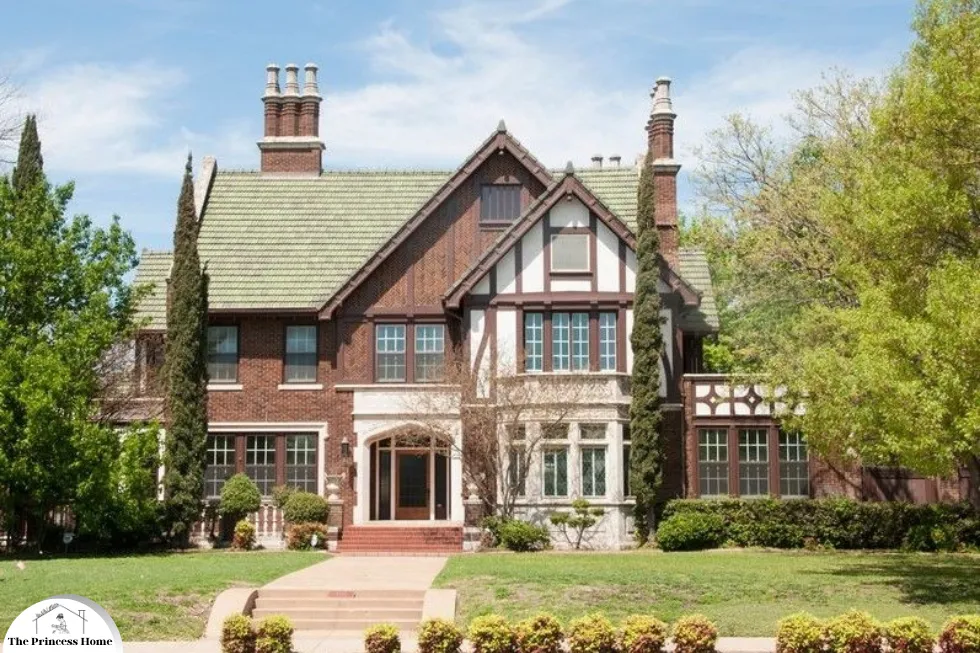
6*.Tudor Revival:
Reflecting the Tudor architectural style of England’s Tudor period (1485-1603), Tudor Revival buildings typically feature steeply pitched roofs, half-timbering, tall chimneys, and leaded glass windows. They evoke a sense of medieval charm and craftsmanship. Tudor Revival architecture, inspired by the Tudor architectural style of England’s Tudor period (1485-1603), emerged as a popular architectural movement in the late 19th and early 20th centuries.
This architectural style is characterized by several distinctive features:
1.Steeply Pitched Roofs:
Tudor Revival buildings often feature steeply pitched roofs, sometimes with multiple gables and cross-gables. These roofs create a dramatic silhouette and contribute to the overall character of the structure.
2.Half-Timbering:
One of the most recognizable features of Tudor Revival architecture is half-timbering, where exposed timber framing is filled in with plaster or brickwork. This decorative technique evokes the medieval charm and craftsmanship of Tudor-era buildings.
3.Tall Chimneys:
Revival buildings typically have tall, prominent chimneys, often made of brick or stone. These chimneys add vertical emphasis to the facade and may feature decorative detailing such as corbelling or chimney pots.
4.Leaded Glass Windows:
Leaded glass windows are another hallmark of Tudor Revival architecture. These windows often feature diamond-shaped or leaded panes, sometimes with decorative tracery or stained glass inserts. Leaded glass windows contribute to the historic character and visual interest of Tudor Revival buildings.
5.Brick or Stone Exteriors:
Tudor Revival buildings may be constructed using brick, stone, or a combination of both materials. The exterior walls often exhibit a textured or irregular appearance, further enhancing the medieval aesthetic.
6.Decorative Bargeboards:
Tudor Revival buildings frequently feature decorative bargeboards, also known as vergeboards or gable trim. These ornamental boards are often intricately carved and placed along the gables or roof edges, adding to the architectural richness of the structure.
7.Oriel Windows:
Some Tudor Revival buildings incorporate oriel windows, which project outward from the facade and are supported by brackets or corbels. Oriel windows provide additional interior space and are often adorned with leaded glass or decorative tracery.
Tudor Revival architecture evokes a sense of nostalgia for England’s Tudor period, with its picturesque cottages, manor houses, and medieval towns. This architectural style remains popular for residential and commercial buildings, valued for its historic charm and timeless appeal.
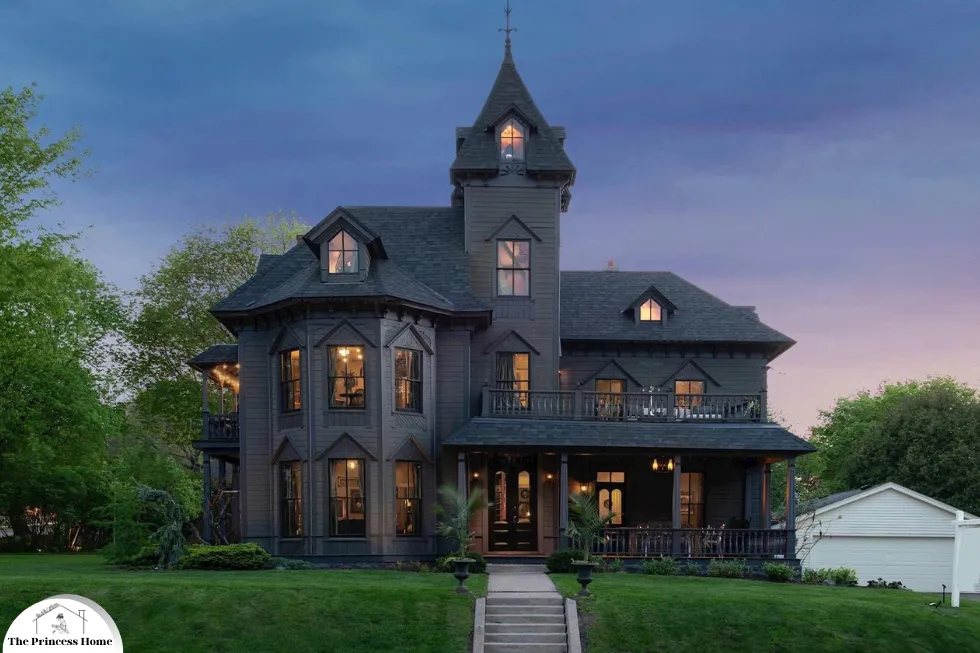
7*.Victorian Gothic:
While similar to the earlier Gothic Revival style, Victorian Gothic architecture often features more extravagant ornamentation and eclectic combinations of Gothic elements with other architectural styles.
Victorian Gothic architecture, while sharing similarities with the earlier Gothic Revival style, is characterized by its penchant for more extravagant ornamentation and the eclectic blending of Gothic elements with influences from other architectural styles. This style emerged during the Victorian era in the 19th century and became particularly popular in Britain and the United States.
Key features of Victorian Gothic architecture include:
1.Elaborate Ornamentation:
Victorian Gothic buildings are known for their lavish ornamentation, which can include intricate carvings, elaborate moldings, and decorative motifs such as quatrefoils, trefoils, and gargoyles. This abundance of ornamentation reflects the opulent tastes of the Victorian era.
2.Eclectic Combinations:
Victorian Gothic architecture often incorporates elements from various architectural styles, resulting in eclectic combinations that blend Gothic features with influences from Renaissance, Tudor, and even Moorish architecture. This eclectic approach allows for creative experimentation and results in buildings with unique character and charm.
3.Towers and Spires:
Many Victorian Gothic buildings feature towers, spires, and pinnacles, which add vertical emphasis and create a sense of grandeur. These architectural elements often serve as prominent focal points and contribute to the picturesque quality of the buildings.
4.Stained Glass Windows:
Stained glass windows are a prominent feature of Victorian Gothic architecture, adding color, richness, and visual interest to interior spaces. These windows often depict religious scenes, floral motifs, or heraldic symbols, showcasing the craftsmanship of the era.
5.Pointed Arches:
Like Gothic Revival architecture, Victorian Gothic buildings typically incorporate pointed arches, which are a defining characteristic of the Gothic style. These arches are used in windows, doorways, and arcades, lending a sense of verticality and elegance to the structures.
6.Polychromy:
Victorian Gothic buildings sometimes feature polychromatic exteriors, with different colored bricks, stones, or tiles used to create intricate patterns and designs. This use of color adds vibrancy and visual complexity to the facade.
7.Asymmetry:
While Victorian Gothic buildings may exhibit some degree of symmetry, they often embrace asymmetrical compositions, with irregular massing, varied rooflines, and projecting bays. This asymmetry contributes to the picturesque and dynamic character of the architecture.
Overall, Victorian Gothic architecture represents a fusion of historical revivalism, artistic innovation, and Victorian sensibilities, resulting in buildings that are both visually striking and culturally rich. This style continues to captivate admirers today for its romanticism, creativity, and sense of historical continuity.
Victorian architecture encompasses a diverse range of styles and substyles, reflecting the eclectic tastes and influences of the era.
Conclusion:
Victorian architecture remains a source of fascination and inspiration, offering a glimpse into a bygone era of creativity and ingenuity.
FAQs about Victorian Architecture.
1. What are the main characteristics of Victorian architecture?
Victorian architecture is characterized by its ornate detailing, eclectic mix of styles, and grandiose designs. Common features include intricate tracery, pointed arches, steeply pitched roofs, asymmetrical facades, and elaborate ornamentation such as spires, turrets, and bay windows.
2. What inspired Victorian architects to create such diverse styles?
Victorian architects drew inspiration from a variety of sources, including historical periods such as the Gothic and Renaissance, as well as cultural influences from around the world. Additionally, advancements in technology and construction techniques allowed for greater experimentation and creativity in architectural design.
3. How did Victorian architecture influence urban development?
Victorian architecture played a significant role in shaping the urban landscape of cities and towns during the 19th century. The construction of grand public buildings, churches, and residential neighborhoods reflected the social and economic aspirations of the burgeoning middle and upper classes. Additionally, the proliferation of Victorian-style homes contributed to the development of distinct neighborhoods and communities.
4. What are some notable examples of Victorian architecture?
Some notable examples of Victorian architecture include the Houses of Parliament in London (Gothic Revival), the Royal Pavilion in Brighton (Indo-Saracenic Revival), the Watts Sherman House in Newport, Rhode Island (Queen Anne), and the Gamble House in Pasadena, California (Tudor Revival). These buildings showcase the diversity and innovation of Victorian architectural styles.
5. How has Victorian architecture influenced modern design?
Victorian architecture continues to influence modern design in various ways. Elements such as ornate detailing, asymmetrical facades, and eclectic combinations of styles have found their way into contemporary architecture and interior design. Additionally, the emphasis on craftsmanship and attention to detail remains a hallmark of quality architectural design.
6. Why is Victorian architecture still relevant today?
Victorian architecture remains relevant today due to its historical significance, architectural beauty, and cultural impact. Many Victorian-era buildings have been preserved as historic landmarks, contributing to the character and identity of cities and towns around the world. Moreover, the enduring popularity of Victorian-style homes and buildings reflects a continued appreciation for the craftsmanship and elegance of this architectural period.




